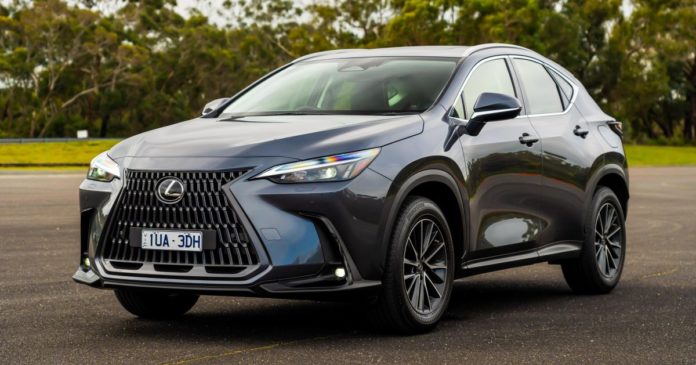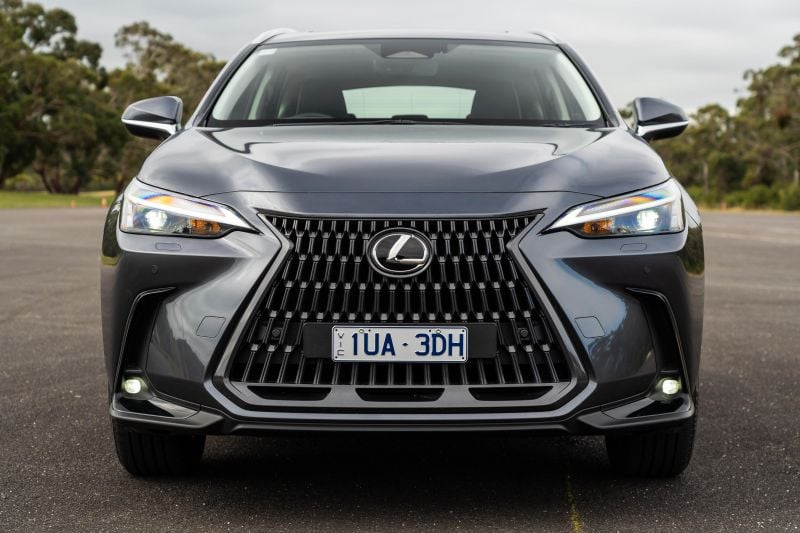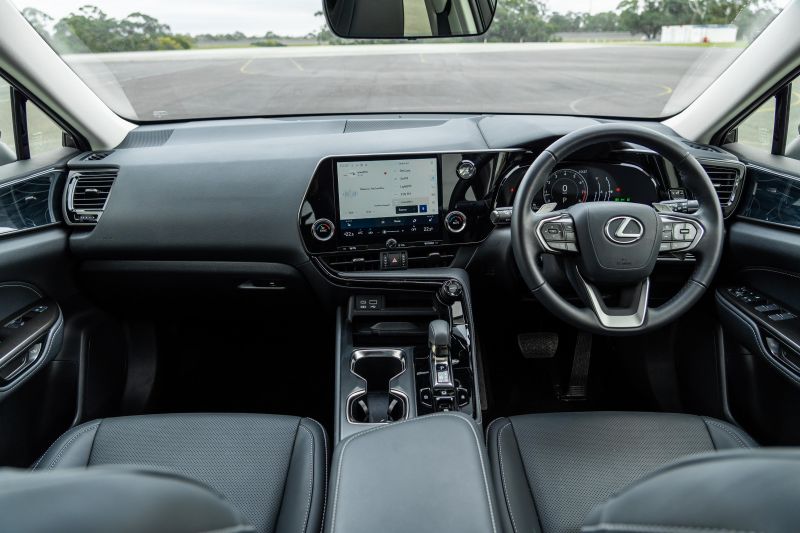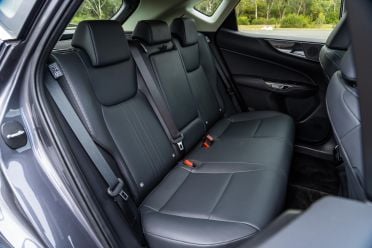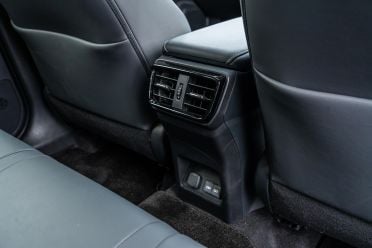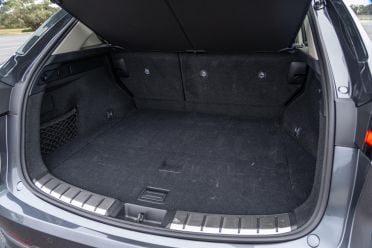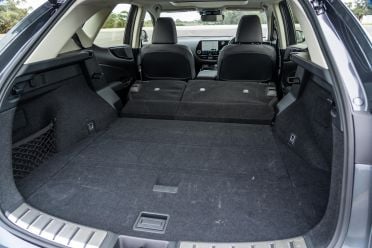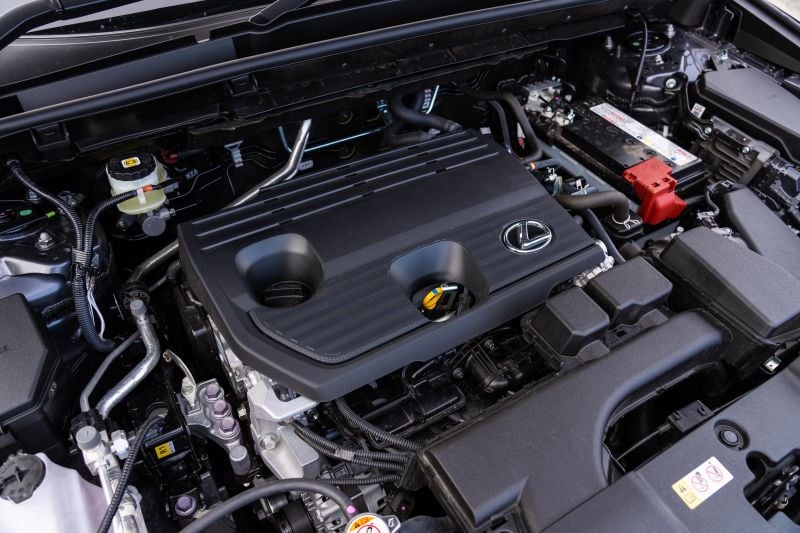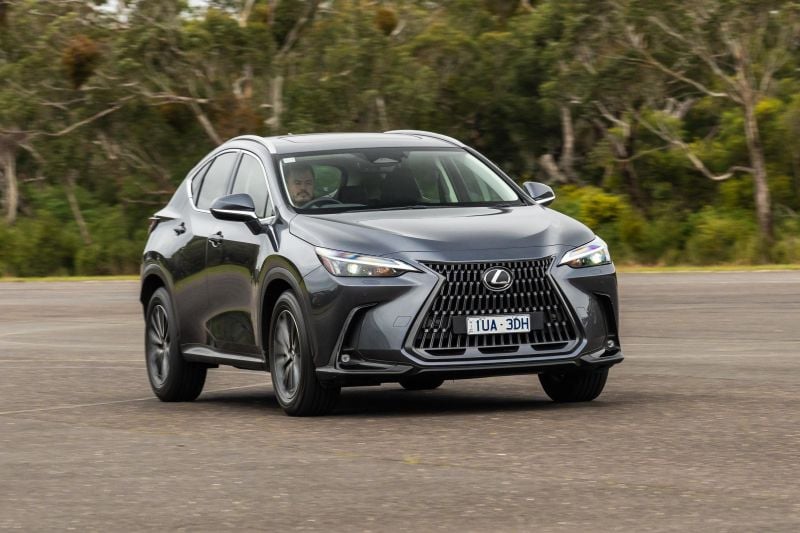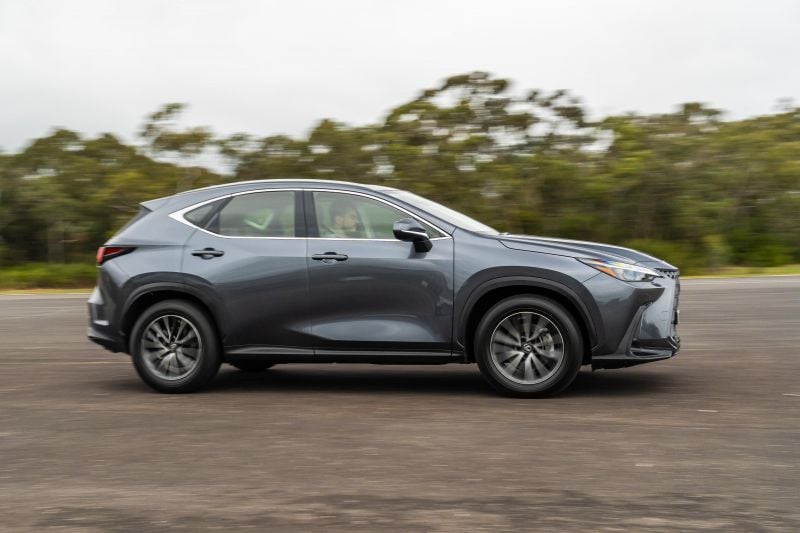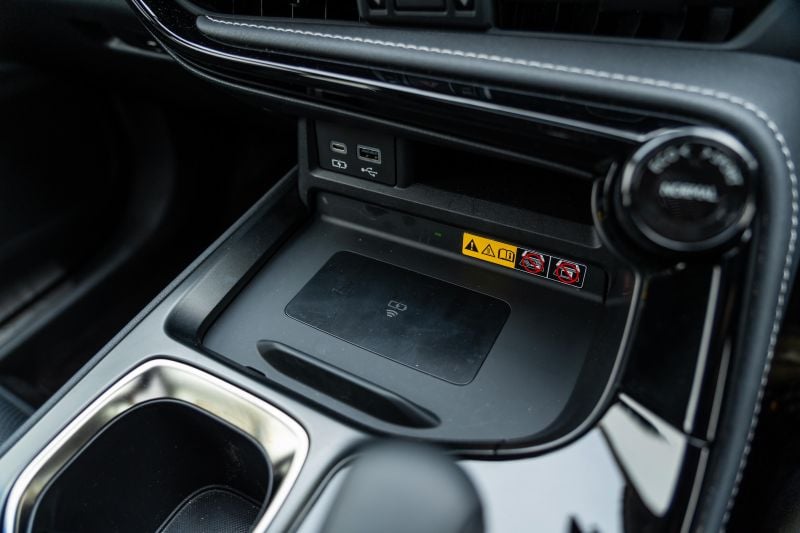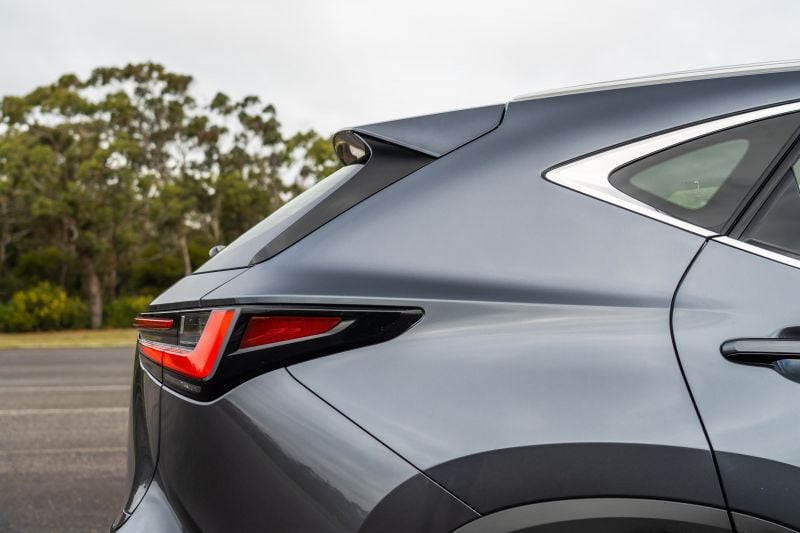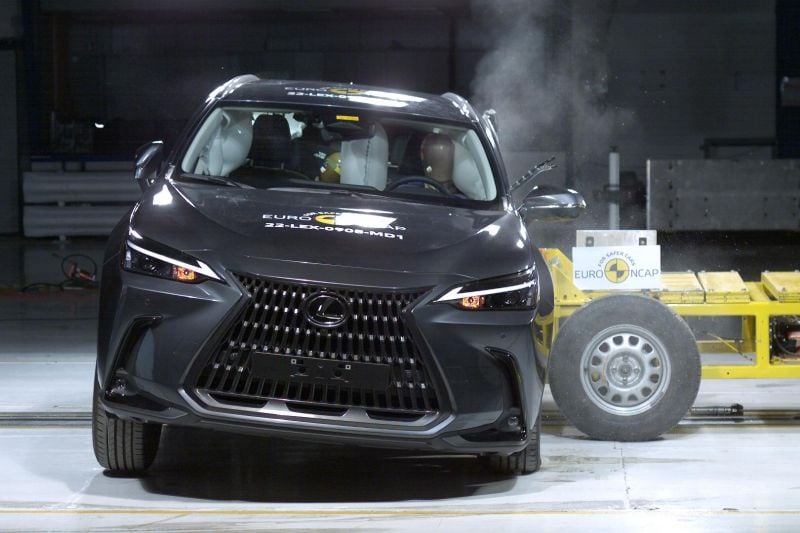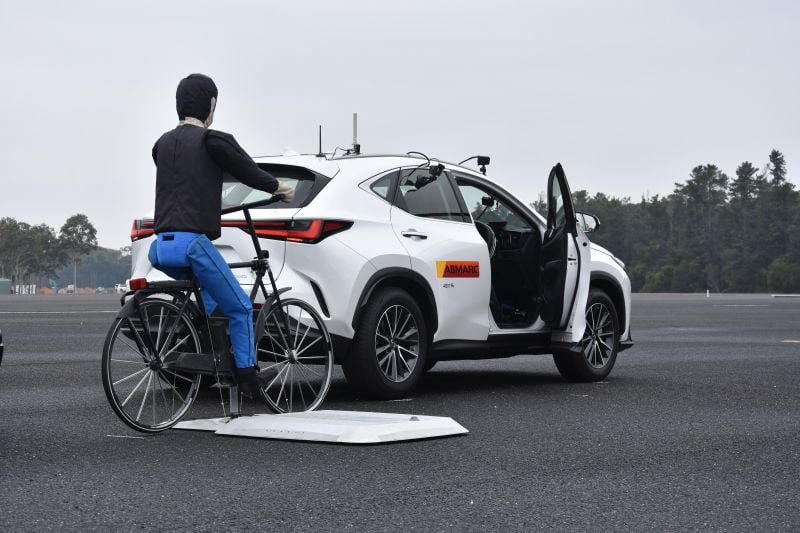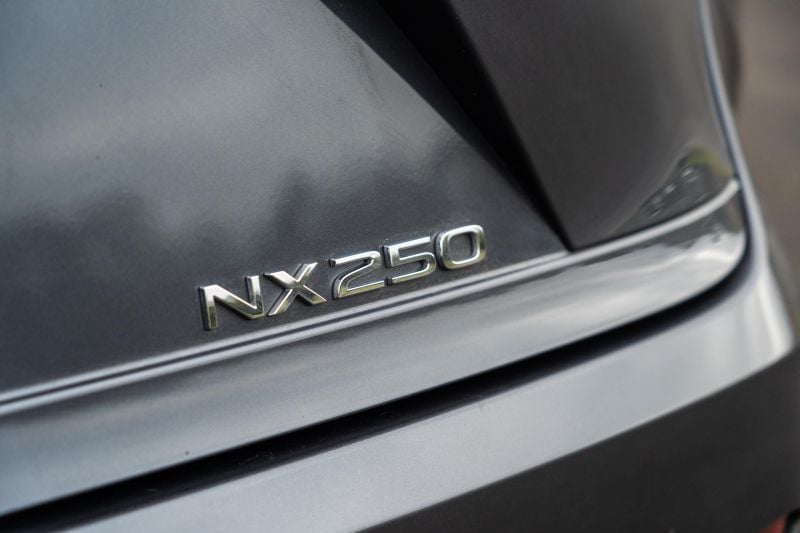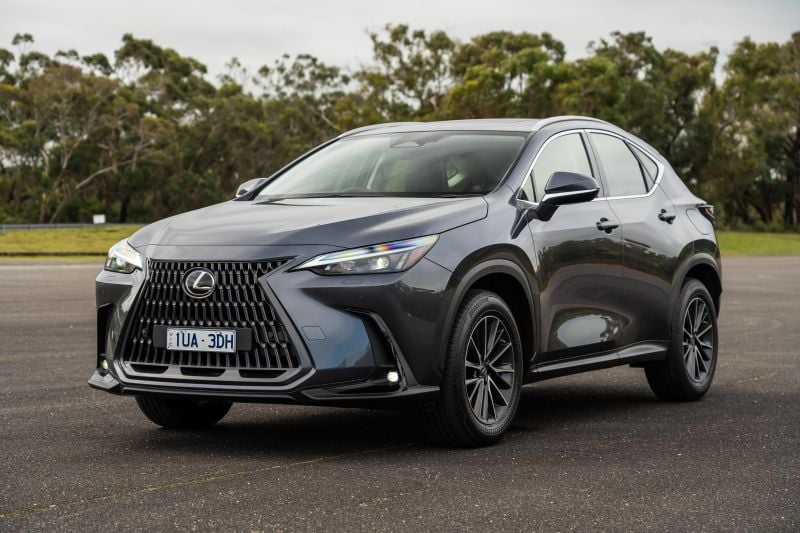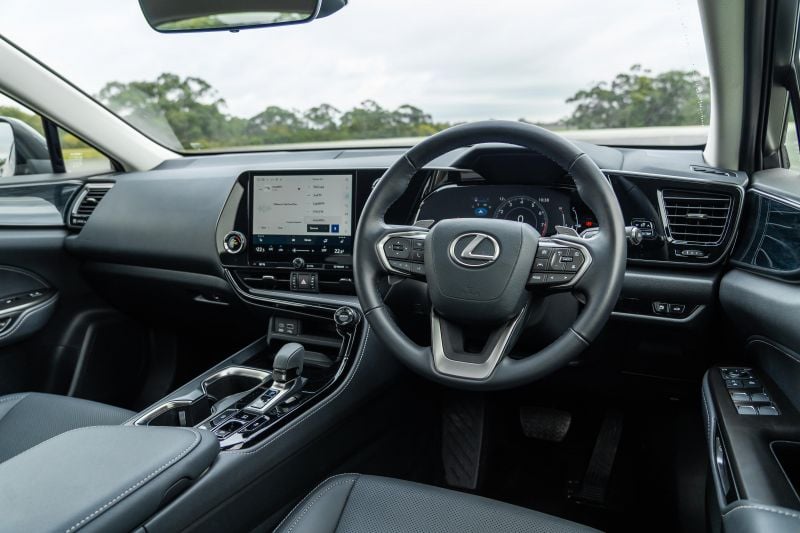For not much more than a top-spec Toyota RAV4, you can get into a Lexus NX.
While the 350h hybrids and 450h+ plug-in hybrid were the headline acts of the new range, the entry-level NX 250 tested here serves as a sharp entry point into the mid-size luxury SUV’s line-up.
It’s cheaper than just about every rival in its segment, and right now it’s more readily available than the rest of the range due to ongoing production and supply constraints for what is one of Lexus’s top-selling models globally.
We tend to recommend the hybrids as our picks in most Toyota and Lexus ranges these days, but unlike the RAV4, the NX’s electrified option is quite a bit more money than this base 250 – despite being effectively offered in the same Luxury specification, there’s almost a $7000 difference.
Like other premium models with mainstream relatives, the Lexus NX is doing its best to show you it’s not just a tarted up RAV4, despite this particular model sharing its 2.5-litre petrol engine with high-spec versions of Toyota’s global best-seller.
Does it do a convincing enough job? Let’s find out!
Note: The original version of this review noted the removal of satellite navigation as a running change which is inaccurate. Lexus NX 250 and NX 350h Luxury models feature cloud-based mapping included as part of a 3-year subscription to Lexus Connected Services which is complementary with purchase.
However, our test car didn’t have this activated and the Lexus Australia website only lists satellite navigation as a standard feature for F Sport and Sports Luxury grades. The review has been amended to accurately represent this.
How much does the Lexus NX 250 cost?
Prices have risen a bit since launch, with the NX 250 now listing for $62,275 before on-road costs – or about $70,500 drive-away using a Victorian postcode.
That’s just under $400 higher than before, which is a marginal increase given industry trends at the moment, and the NX 250 still comes in well under entry-level versions of most rivals.
An Audi Q5 35 TDI starts from $67,900, and you won’t get a BMW X3 sDrive20i for less than $81,700 in 2023. Forget any version of the Mercedes-Benz GLC, which is now a minimum $100,000 proposition in Australia, while the entry-level Volvo XC60 Plus B5 starts from $73,990.
Beyond the traditional set of competitors, the NX 250 undercuts the Genesis GV70 2.5T RWD (from $70,500), though has new competition from Mazda in the form of the new CX-60 (from $59,800) which as standard gets a rear-biased architecture and more powerful inline six engines.
Further, the step up from mainstream isn’t that great – depending on whether you value features or badge. The related Toyota RAV4 with the same 2.5-litre petrol engine is $56,230 in Edge AWD guise, while the Mazda CX-5 G35 Akera starts from $54,600. All prices exclude on-road costs.
Lexus NX pricing:
- Lexus NX 250 2WD: $62,275
- Lexus NX 350h Luxury 2WD: $69,050
- Lexus NX 350h Sport Luxury 2WD: $76,550
- Lexus NX 350h F Sport 2WD: $76,550
- Lexus NX 350h Luxury AWD: $73,850
- Lexus NX 350h Sports Luxury AWD: $81,350
- Lexus NX 350h F Sport AWD: $81,350
- Lexus NX 450h+ F Sport AWD: $90,948
All prices are before on-road costs
What is the Lexus NX 250 like on the inside?
There’s not much here that links the NX to its Toyota roots, which is a good thing.
While the bones and drivetrain are largely the same as what’s on offer from the RAV4, there’s no resemblance to its relative from the driver’s seat.
With a less utilitarian approach to cabin design and a greater focus on material quality and tactility – as is the Lexus way – this feels significantly more expensive. I could do with more conventional door handles though, as the E-Latch units proliferating through the Lexus line-up right now take some getting used to and seem gimmicky.
Even in what is its entry-level specification, the Lexus dons padded surfaces along the mid and upper tiers of the doors and dashboard, the switchgear looks and feels more upmarket than Toyota units, and the leather-accented upholstery for the seats and steering wheel feels a cut above anything the RAV4 has to offer.
It definitely doesn’t feel like a ‘cheap’ model designed to get people into showrooms with its pricing, and doesn’t want for much compared to models higher up in the range, with the exception of the infotainment system – which is significantly smaller than the screen offered in F Sport and Sports Luxury grades.
The standard 9.8-inch touchscreen isn’t all that small, but the 14-inch display in the upper echelons of the range makes this look a little meek.
It’s effectively running the same software as the high-end display, so from a usability and experience perspective it’s almost the same but on a smaller screen. However, Lexus fits a cloud-based navigation system on NX 250 and NX 350h Luxury versions as opposed to an embedded setup like higher grades.
What does this mean? With a Lexus Connected Services subscription (three years included with purchase) and the integrated data module, the NX 250 effectively uses an online map service like your smartphone would, with temporary offline maps through the provision of surrounding map data – our test car didn’t have this activated, and therefore couldn’t offer mapping without smartphone mirroring.
Wireless Apple CarPlay and Android Auto, as well as DAB+ digital radio both feature as standard, and the connection with me iPhone 14 Pro Max was wonderfully consistent. However, the fact Lexus has cut equipment while charging more money is disappointing.
Thankfully, there’s a standard wireless phone charger that slides in and out of the cupholder area to keep your phone juiced while using wireless smartphone mirroring, but it’s not the grippiest one we’ve seen so occasionally your phone might slide off the charge area if you take a hard corner.
Storage and practicality up front is pretty good, with big cupholders and several cubbies for storing your stuff.
The aforementioned wireless phone charger pad slides out of the way to reveal a wallet and key-sized drawer that’s a handy bit of extra storage that can also be hidden out of sight.
Another deep cubby lives under the padded front-centre armrest, and there’s decent door bins that can hold bottles and other loose items should you need.
Other amenities include USB-A and -C ports which charge devices and also connect them to the infotainment system, and there’s a 12V outlet hidden under that shelf.
In the back, the NX is one of the more compact vehicles in its class but offers adequate room for two adults.
Behind my preferred driving position (I’m 6’1) I had decent knee and legroom, and good headroom. The Lexus won’t be knocking the X3 or XC60 off for outright space, but it does the job and is notably more practical than the smaller UX.
You get directional air vents (but no additional climate controls), additional charging ports and map pockets back there, as well as a fold-down centre armrest with cupholders.
ISOFX anchors feature on the outboard seats as do top-tethers across all three rear seat backs, meaning the kiddies are catered for back there. If you’re a young family with growing kids, this should be able to grow with you for a little while before you need something like an RX.
The Lexus NX offers 520 litres (VDA) with the rear seats in place, expanding to 1141 litres with them folded. The space itself is nice and square, and it’s reasonably flat with the rear seats folded – though there’s a bit of a step from the boot floor to the seat backs.
You won’t find a spare wheel in the NX, as it’s wearing run flat tyres.
What’s under the bonnet?
The NX 250 is powered by a 2.5-litre naturally-aspirated four-cylinder petrol engine driving the front wheels.
It’s effectively the same unit as that used by the top-spec Toyota RAV4 Edge AWD, right down to its 152kW (6600rpm) and 243Nm (4000-5000rpm) outputs and eight-speed automatic. Unlike its Toyota sibling however, the Lexus doesn’t offer all-wheel drive with this powertrain.
The unit features sequential multiport, direct and port fuel injection, and is homologated to Euro 6b emissions standards – likely why it demands minimum 95 RON premium unleaded fuel.
Lexus claims the NX 250 will accelerate from 0-100km/h in 8.7 seconds, and use 6.9 litres per 100km on the combined cycle – with CO2 emissions of 158g/km. Idle stop/start technology is fitted as standard.
NX 250, NX 350 and NX 450h+ engine variants are only rated to tow up to 1000kg, while NX 350h models up that to 1500kg. Kerb weight for the NX 250 is listed at 1705kg, making it the lightest variant.
How does the Lexus NX 250 drive?
The base NX fires up with a high-pitched, buzzy idle that’s a bit of a contrast to the more silent start-up of the hybrids.
Once you’re rolling, it drives well enough without being a standout in any area. This definitely feels like an entry-level drivetrain compared to the more responsive electrified and turbocharged alternatives further up the range.
The 2.5-litre petrol is a willing, rev-happy unit, but it has a buzzy, at times coarse sound that can be a little unrefined for a car like this, and the lack of turbocharging means it can feel breathless at low revs. It really needs to be pushed to get anywhere quickly, which hurts efficiency and refinement.
I also found the eight-speed automatic to be a little off the mark. First gear feels quite short and the shift from first into second, and second to third under harder throttle can almost feel like the NX is trying to flat shift, with revs flaring a little as it changes cogs.
Given its more comfort-focused vibe, you’re best to drive the NX 250 in a measured, sedate manner that doesn’t push the drivetrain too hard, and allows you to better enjoy the relatively comfortable and quiet cabin at a cruise.
Once at speed, the NX offers a supple and well controlled ride and good insulation from road and wind noise, something that is often neglected in the lower ranks of luxury brand line-ups.
While I wasn’t a fan of the NX’s performance off the line, at a cruise the Lexus is wonderfully relaxed and comfortable, clearly playing into the Luxury nameplate rather than trying too hard to be ‘sporty’ – which is how I felt about the NX 350 F Sport I reviewed last year.
Steering and handling is responsive and secure, light enough to make lower-speed manoeuvres a cinch but also not sacrificing accuracy or feel from the front axle. It strikes a good balance for this kind of vehicle.
The lack of a surround-view camera is a shame, though there’s decent outward visibility for parking.
Despite being the entry-level variant, Lexus has fully stocked the NX 250 with its suite of driver assistance technologies, including a semi-autonomous highway driving assistant that combines adaptive cruise control and Lane Tracing Assist (centring) to take the load off extended stints on the freeway.
It does a good job keeping the vehicle centred in its lane while also having a pretty natural response to changes in lead car speed or if someone cuts ahead of you in the lane. I will say, the Lexus adaptive cruise can at times be a little conservative for my tastes, particularly if you’re on a busy freeway with impatient drivers behind you.
Beyond that the blind-spot and rear cross-traffic assists work as you’d expect, though when parking I had a few instances where the NX would slam on the brakes if it thought I was too close to a wall in front of me despite still having a good amount of room (and front parking sensors).
The only features the NX 250 (and NX 350h Luxury models) miss out on compared to higher grades are a surround-view camera system as well as adaptive high-beam with higher-grade headlights – base models make do with static LED headlights and auto high beam, which works fine.
What do you get?
NX 250 highlights:
Exterior
- 18-inch alloy wheels
- LED headlights
- Auto static levelling
- Headlight cleaners
- LED daytime running lights
- Fog lights front, rear
- Heated side mirrors, auto-dimming
- Power tailgate
- Roof rails
- Rear spoiler
- Runflat tyres
- Rain-sensing wipers
Interior
- 9.8-inch touchscreen infotainment system
- Wireless Apple CarPlay
- Wired Android Auto
- DAB digital radio
- Lexus Connected Services
- 10-speaker audio
- Digital Multi Information Display
- 8.0-inch driver’s cluster
- Keyless entry, start
- Electrochromatic rear-view mirror
- Electrically-adjustable steering column
- Leather-accented steering wheel
- Leather-accented seat upholstery
- Heated front seats
- E-Latch interior door handles
- Dual-zone climate control
- 8-way power front seats
- 2-way power lumbar, driver
Options
Enhancement Pack: $3000
- Single-pane sunroof
- Hands-free power tailgate
- Wireless phone charger
Colours
Standard
Premium: $1750
- White Nova (F Sport)
- Titanium
- Sonic Quartz
- Sonic Chrome
- Graphite Black
- Khaki Metal
- Celestial Blue
- Cobalt Mica (F Sport)
- Carnelian (F Sport)
Is the Lexus NX 250 safe?
The new Lexus NX was recently awarded a five-star ANCAP safety rating, based on 2022 Euro NCAP tests.
The mid-sized SUV scored 91 per cent for adult occupant protection, 89 per cent for child occupant protection, 83 percent for vulnerable road user protection and an impressive 92 per cent for safety assist.
ANCAP praised the NX’s impressive AEB performance as well as its protection of the driver and front passenger in the side impact and frontal offset tests respectively.
The NX was, however, only awarded a Marginal rating for driver chest protection in the frontal offset test and was penalised accordingly (-1.21 pts out of 4.00 pts).
Standard safety equipment includes:
- 10 airbags
- incl. driver’s knee, front-centre
- Adaptive cruise control incl. Stop/Go
- Autonomous emergency braking (AEB)
- Pedestrian detection (day/night)
- Cyclist detection (day)
- Junction assist
- Auto high-beam
- Blind-spot monitoring
- Emergency Steering Assist
- Lane departure warning
- Lane keep assist
- Lane Tracing Assist (centring)
- Parking sensors front, rear
- Rear cross-traffic assist
- Reversing camera
- Safe Exit Assist
- Traffic sign recognition
How much does the Lexus NX 250 cost to run?
Every Lexus is covered by a five-year, unlimited-kilometre warranty.
Capped-price servicing for three years or 45,000km is set at $495 per visit. The NX can be collected from the owner’s home or place of work, with a complimentary loan vehicle delivered door-to-door.
You also get access to the Lexus Encore ownership program, which gives owners access to Caltex fuel discounts, invitations to luxury dinners and events, as well as luxury hotel partnership benefits
Lexus Australia also offers a new smartphone app that lets owners track and check up on or control aspects of their vehicle from the couch.
In terms of real-world fuel consumption, I was seeing high 7s and low 8s in mixed daily driving, and you’ll see it edge into the 9s with more high-traffic city use. Not bad, but also not standout.
CarExpert’s Take on the Lexus NX 250
It may not set your pulse racing, but the base NX 250 is a solid premium SUV.
For $65,000 with the optional Enhancement Pack, the base NX covers most bases and is still significantly more affordable than other mid-size luxury rivals, if lacking in performance compared to equivalent competitors.
There’s a good amount of space on offer, and despite the at times coarse powertrain and transmission, it’s a quiet and comfortable cruiser that will be well suited to daily commutes.
Our previous review suggested the NX 250 might be a steep ask over a top-spec RAV4, but the gap has narrowed significantly since and other rivals have become dearer to buy, only strengthening the Lexus’s case.
The lack of embedded navigation at this price point has me scratching my head a bit – even if the cloud-based system is complementary for three years – and my tastes don’t really gel with the petrol engine’s performance and refinement – though I’m sure it will be just fine for many people.
Yes the NX 350h is the sweet spot, but is it really worth an extra $7000 and a lengthy wait time? I’m not sure.
Click the images for the full gallery
BUY: Lexus NX
MORE: Everything Lexus NX

